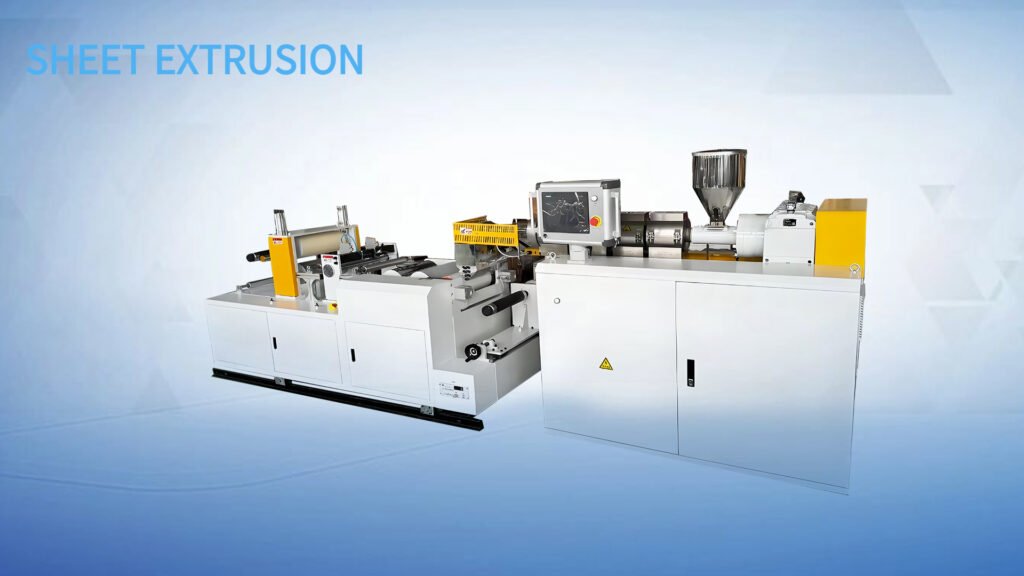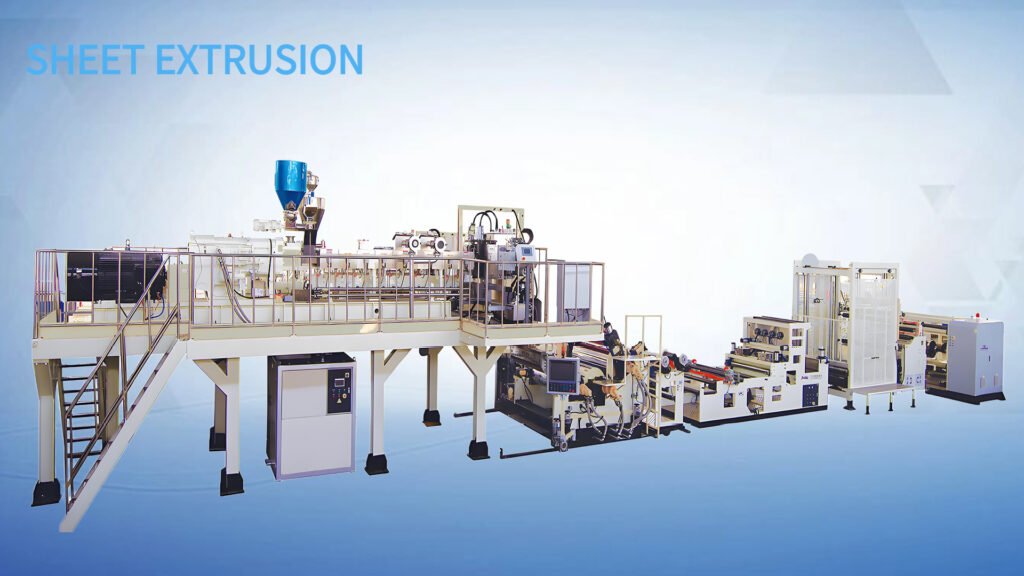A sheet extrusion line is the core equipment in plastic processing for the continuous production of plastic sheet (typically ranging in thickness from 0.1mm to 15mm). Its fundamental operating principle involves a rotating screw within a heated barrel that conveys, compresses, melts, and plasticates solid plastic pellets (or powder) into a homogeneous viscous-flow-state melt.
The molten plastic is then forced under high pressure through a specially designed flat die (commonly a T-die or coat-hanger die), forming a continuous melt curtain of the desired width. Immediately afterward, this melt curtain enters the critical three-roll calender (also known as calendering rolls or polishing/sizing stacks). This set of precision temperature-controlled rolls performs calendering (smoothing and gauging), cooling, and precise sizing on the melt, imparting the sheet with its final thickness uniformity, flatness, surface finish, and dimensional stability. The cooled and solidified sheet is then pulled at a constant speed by the haul-off unit (or puller), and finally wound into rolls by the wind-up unit (or winder) or cut into sheets as required.
Sheet extrusion lines can process various thermoplastics, such as PP, PE, PS, ABS, PVC, PET, etc. The produced sheets are widely used in food packaging (containers, trays), industrial liners, advertising materials (display boards, light boxes), stationery covers, construction templates, medical packaging, and other fields. Key characteristics include the ability to achieve efficient, continuous, large-scale production, with flexible control over sheet specifications and properties by adjusting parameters like die gap, roll nip settings, temperature profiles, and line speeds.


